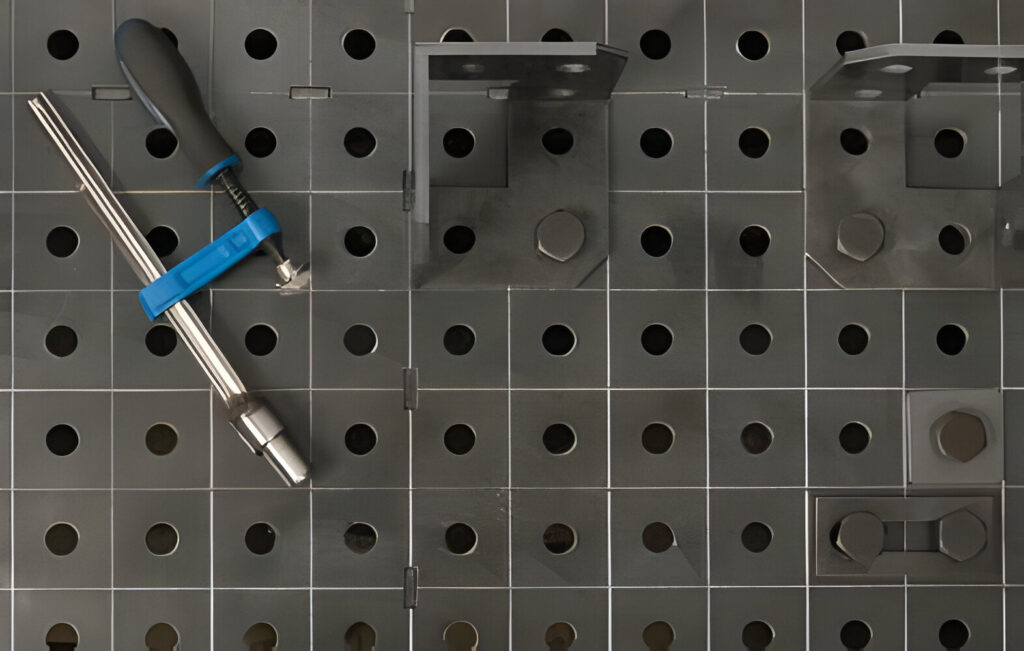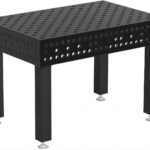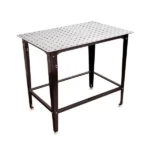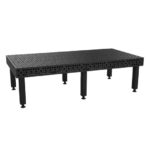In the world of metal fabrication, having the right tools is crucial to achieving precision and efficiency. One such indispensable tool is the welding table top with holes. This specialized equipment not only enhances productivity but also ensures accuracy in various welding tasks. In this article, we will delve into the intricacies of welding tables with holes, exploring their features, benefits, and applications, and why you should consider them for your workshop.
Understanding the Design:
A welding table top with holes, often referred to as a perforated welding table, is characterized by a flat surface embedded with a grid of holes. These holes are typically of uniform size and spacing, providing a versatile platform for a variety of clamping and fixturing applications. The welding table hole pattern is meticulously designed to accommodate different types of clamps, stops, and fixtures, allowing for precise positioning of workpieces.
Key Features and Benefits:
- Versatility and Flexibility: The perforated design allows for maximum flexibility in securing workpieces. Whether you are working on large structures or small, intricate parts, the evenly spaced holes provide multiple points of attachment, making it easier to achieve the exact positioning required for welding.
- Enhanced Precision: The welding table hole size and spacing are critical factors that contribute to the precision of your work. Standard hole sizes usually range from 16mm to 28mm, with the spacing between holes being equally important to ensure that clamps and fixtures can be positioned optimally. This precision is particularly beneficial in complex welding tasks where accuracy is paramount.
- Durability and Stability: Welding tables with holes are typically constructed from high-strength steel, ensuring durability and resistance to warping under high temperatures. The robust construction provides a stable work surface that can withstand the rigors of heavy-duty welding operations.
- Ease of Use: The standardized hole pattern makes it easy to set up and reposition clamps and fixtures, reducing setup time and increasing efficiency. This feature is especially useful in production environments where time is a critical factor.
Applications:
Welding tables with holes are used in a variety of applications across different industries. In automotive manufacturing, they are essential for assembling car frames and components. In the aerospace industry, they provide the precision needed for constructing aircraft parts. Additionally, they are widely used in general metal fabrication shops for creating structures, machinery, and equipment.
FAQs:
- What is the typical welding table hole size? Most welding tables feature hole sizes ranging from 16mm to 28mm. The size you choose depends on the type of clamps and fixtures you use and the precision required for your tasks.
- How do I maintain my welding table with holes? Regular cleaning to remove metal debris and periodic inspection for any signs of wear or damage will help maintain the longevity of your table. Using protective coatings can also prevent rust and corrosion.
- Can I customize the hole pattern on my welding table? Yes, many manufacturers offer customization options for hole patterns, allowing you to tailor the table to your specific needs.
In conclusion, investing in a welding table top with holes can significantly improve the efficiency and precision of your welding projects. At KT Foundry, we offer a wide range of high-quality welding tables designed to meet the diverse needs of metal fabricators. Visit our website to explore our products and contact us for more information on how we can help enhance your workshop capabilities.




